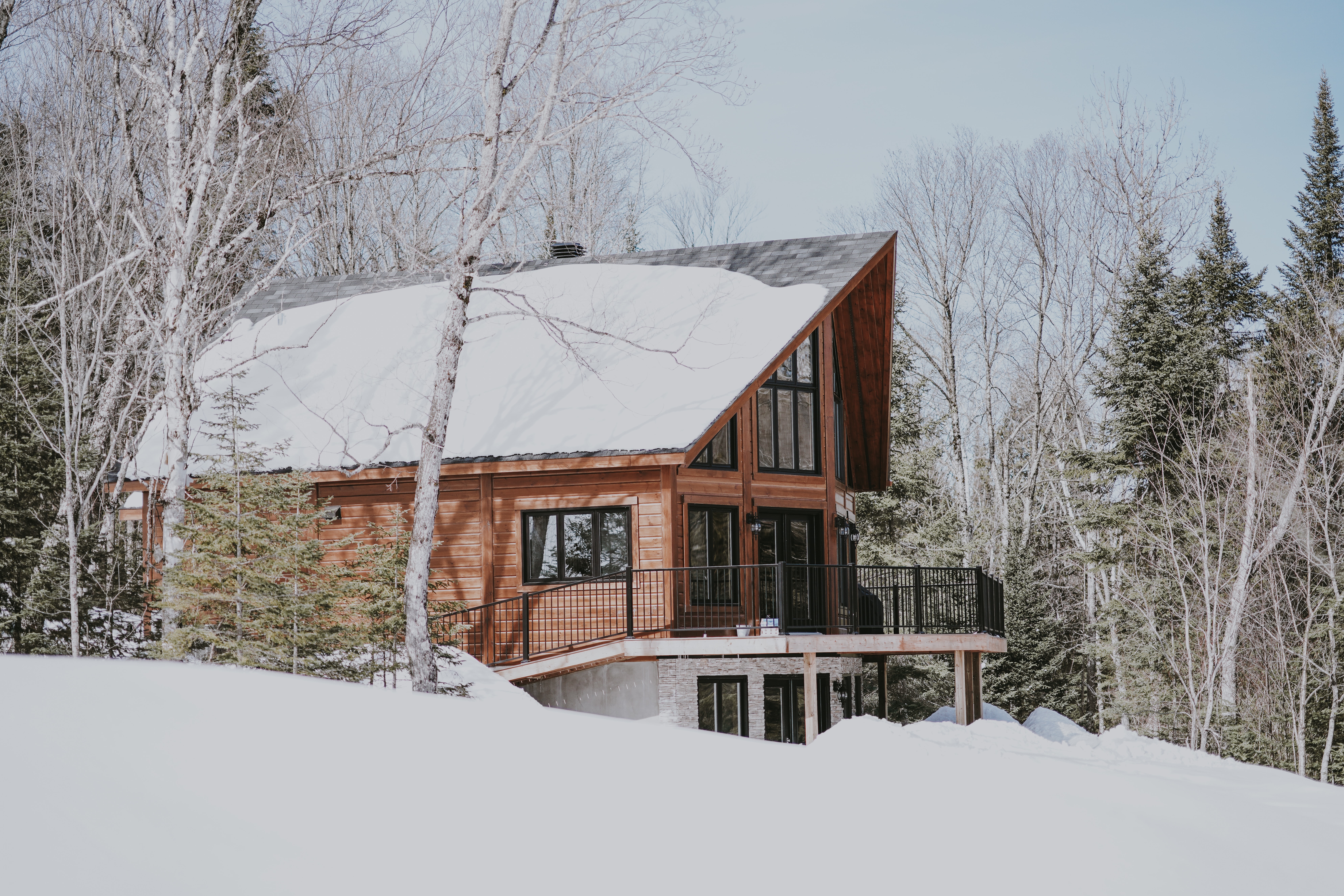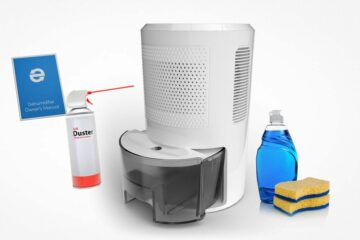When it comes to humidity in winter, basements often become a problem room. Just think about it: with very little exposure to heat and sunlight from outside, basements tend to trap excess moisture and provide an excellent breeding ground for moisture-related damages. Luckily for you, there’s a simple solution: use a basement dehumidifier in winter.
As most people know, a dehumidifier can regulate humidity in rooms such as the basement and other shut-off areas of the house. However, when it comes to a dehumidifier in the winter months, you should always know how to properly run your device.
In this all-inclusive dehumidifier in winter guide, we will discuss the most important factors that will affect the productivity of your dehumidifier. So, if you are wondering, “do I need to run a dehumidifier in my basement in winter?” then keep reading to find out! Let’s dive right in.

When to Run a Basement Dehumidifier in Winter? To Use or Not to Use
Here are 2 incredibly important factors to keep in mind as you debate whether or not you need a basement dehumidifier in winter. First, let’s discuss the climate of your region.
1. Where You Live
WARNING! Be careful if you live in cold weather climates. Since the purpose of a dehumidifier is to attract moisture, the coils could freeze if the weather gets too cold.
However, in rooms that are above 60 degrees Fahrenheit, such as a heated basement, then a dehumidifier would work just fine. Just pay attention if the temperatures start to drop, especially at night.
Now, let’s talk about the humidity in your home.
2. Your Relative Humidity
As you debate whether or not to use a dehumidifier in winter, you should always watch the humidity levels in your home.
If your relative humidity levels stay high, it might be a good idea to run your device. In fact, if your humidity levels remain above 50 percent, your room will benefit from a basement dehumidifier.
Pro-tip: use a handy hygrometer to monitor the humidity levels and help you calibrate your dehumidifier settings correctly.
What is Relative Humidity?
This is the common humidity you hear about in weather reports. It is the amount of water vapor in the area and is a ratio of the absolute humidity and the potential amount of water saturation that could be in the air.
Now that you know when to use your dehumidifier, it’s time to talk about how to properly run it throughout the winter months.
3 Ways to Properly Run a Dehumidifier in Winter
If you choose to run your dehumidifier in winter, then you will want to pay close attention to what we say next! Here are 3 key ways to properly run your device all season long.
1. Monitor Your Dehumidifier Regularly
Always keep an eye on your device whenever you decide to run it. If the temperature or humidity drops below the ideal level, you will want to turn the dehumidifier off. You never want the coils or water to freeze because it can cause lasting damage to the device.
Don’t have time to constantly monitor your device? Set an automatic humidity threshold! For starters, we recommend an automatic threshold of 30 percent humidity.
2. Check the Room Temperature
Next, if you happen to notice the room is cold but still develops high humidity, then run a heater for a few hours each day. This will help regulate the temperature in the room and make it a little easier to control relative humidity.

Quick Tips on How to Use Dehumidifiers
In 2022 and beyond, keep these next suggestions in mind.
Determine How Long To Run Your Dehumidifier in Winter
Can you run a dehumidifier all the time? Yes and no. The answer actually depends on a few factors:
- Whether your dehumidifier is electric or desiccant
- What is your average relative humidity is where you’re using your dehumidifier
Did you know? Electric dehumidifiers can be left for a long time before their tray is full of water. As long as you come back to check on them every day or every other day, it’s usually fine.
On the contrary, small electric dehumidifiers will eventually burn out from 24/7 use– typically after six months or more. As for Eva Dry’s desiccant dehumidifiers, these devices are actually renewable.
Once the beads are too wet to use, you can plug them in to dry out the desiccants inside. Then, unplug the dehumidifier and put it back where it was before.
Don’t Drop Relative Humidity Too Low
If you run a dehumidifier all the time, you might actually make the room too dry. On the bright side, this isn’t normally the case– it only tends to happen when you use the dehumidifier for more than eight (8) hours resulting in a relative humidity of less than 15%.
Although it isn’t dangerous to stay in a room with extremely low relative humidity, it can irritate your throat and dry out your sinuses. Typically, you want to keep the relative humidity at 20-25%. Just don’t forget to check the relative humidity before you leave the dehumidifier on overnight!
Keep Your Home Dry with a Dehumidifier in Winter
Here’s a fact: every house is different. In fact, much of the humidity is based on where you live and how much insulation your home has. For instance, if your bedroom is close to the basement, you may even want to set up a small humidifier next to the bed!
Need some more helpful tips? Check out our guide on how to choose your dehumidifier settings and 6 basic steps on how to use a dehumidifier properly.




Hi I have just bought a dehumidifier. I live in Ohio but not sure ifI need to run it in the winter in my basement .
[…] Ref 3 […]
great